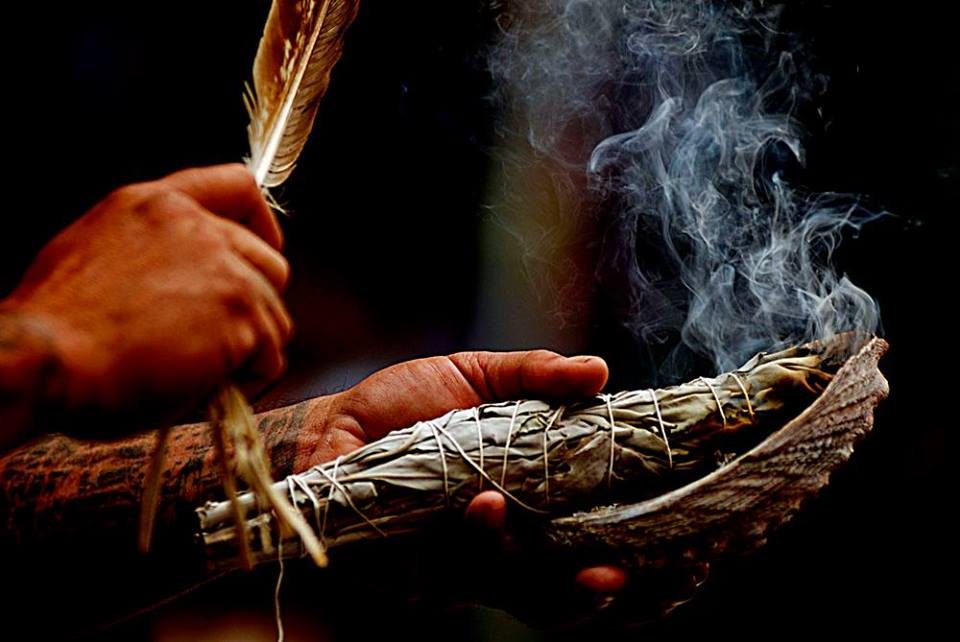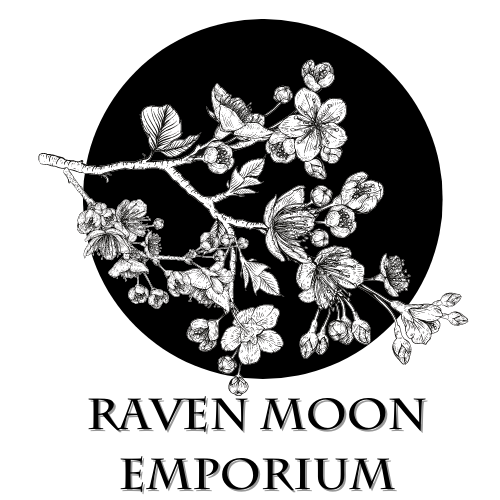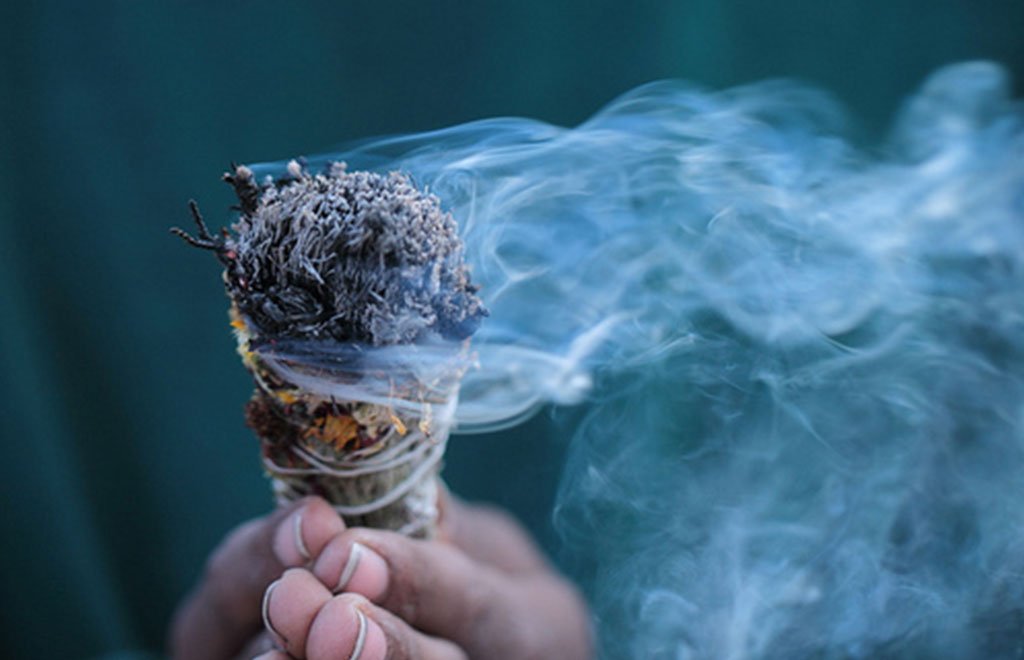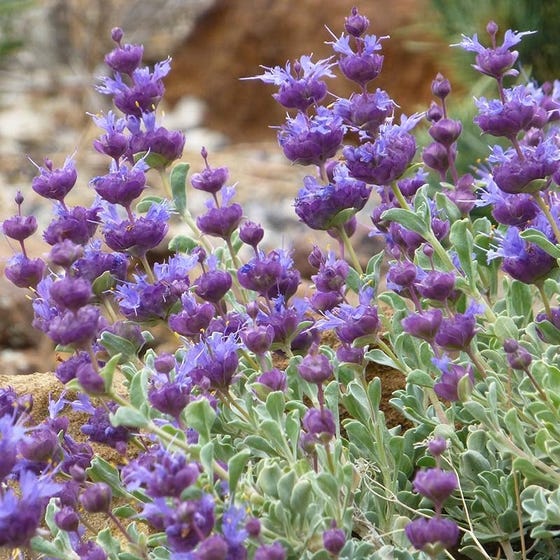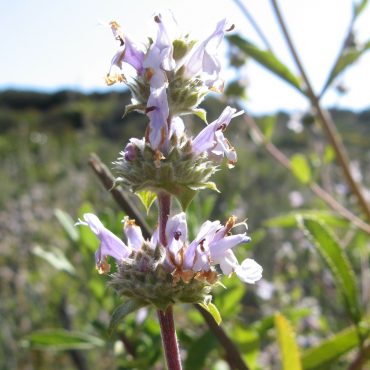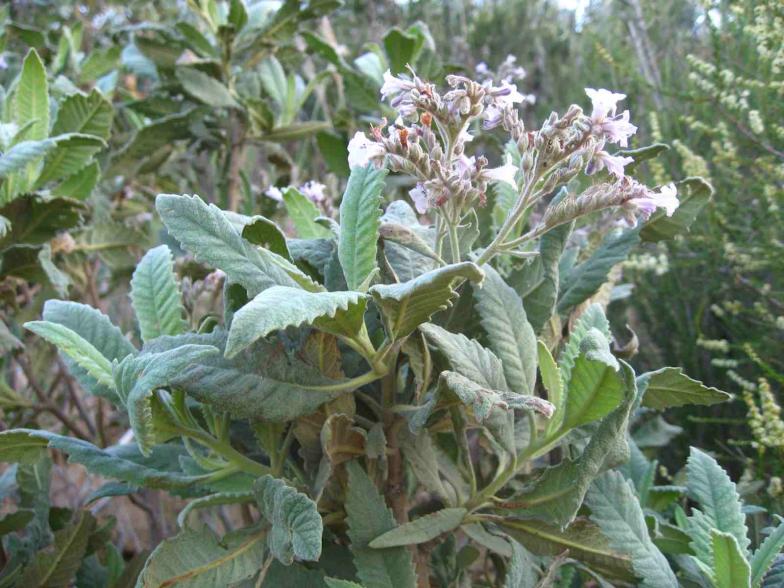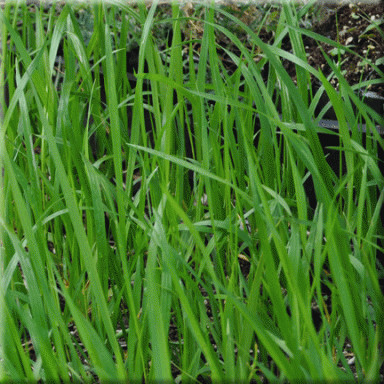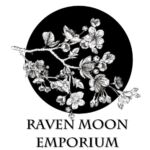What is Smoke Cleansing?
In today’s modern version of smoke cleansing in the US, we tend to stick with herbs used by native cultures in the America’s.
The Steps of Smoke Cleansing
Using smoke to cleanse is generally a 2 step process. The first step is to clear the area, removing low and negative energies and vibrations. The second step generally varies based on what you are trying to do. For example, what do you wish to bring into that space, person, or object, now that you have cleansed it?
Step 1 – Cleansing
For this step, you can use one of the herbal bundles listed below. If you are cleansing a place, you should do it with the windows closed. Once the cleansing smoke has permeated the location, you can then open the windows before proceeding to step 2:
-

White Sage White Sage – Salvia Apiana
California White Sage is unique among all the sages in the world. Its broad leaves grow in beautiful flower-like clusters that sit atop a silvery stalk. Its scent is unmistakable with a strong, pleasant aroma that evokes the chaparral environment of the mountains of Southern California, the habitat where California White Sage is found. The Cahuilla, a Native American tribe that lived in San Diego and Riverside counties, called white sage qas’ily and used its seeds to make a type of flour. They also used white sage as a cure for colds, preparing the leaves in various manners. It is also known that they burned white sage. The smoke is used to purify objects. Today, the strong scent of California White Sage is prized for use in smoke cleansing, and when burned, is believed to purify people, places, and objects. The White Sage bundles we offer are made from Sustainably harvested sage in California and bundled by native families.
-

Desert Sage Big Sagebrush/Desert Sage – Artemisia Tridentata
Big Sagebrush (Artemisia tridentata) is one of the most frequently used sages by Native Americans. It is found throughout the West, Northwest, Southwest, and Plains states. It was used medicinally by the Cahuilla, Diegueño, Flathead, Havasupai, Hopi, Navajo, Paiute, Salish, Zuni, etc. Treatments varied from burning the plant and inhaling the smoke to making teas and poultices. The Cahuilla called it wikwat and made tea from the leaves for stomach disorders. Both the Cahuilla and Paiute collected the seeds as a food source to make a type of flour. Some tribes also used big Sagebrush as a building material, fuel source, and plant to make a yellow dye. Ceremonially, it was used by various tribes to become spiritually clean.
-

Palo Santo Palo Santo – Bursera graveolens – Palo Santo, literally meaning “holy wood” in Spanish, is a widely distributed tree throughout Central and South America. Palo Santo is used in South America in much the same way as White Ceremonial Sage is used in North America – to combat negative energy and cleanse the space. Palo Santo is different from many other smoke cleansing herbals as it is fragrant in its raw form and does not necessarily need to be lit. However, it usually is when being used for ceremonial purposes. For example, Palo Santo is often used by Amazonian shamans in sacred plant spirit ceremonies; the rising smoke of the lit sticks is believed to enter the energy field of ritual participants to clear misfortune, negative thoughts and to chase away evil spirits. Its use reportedly dates back to the Inca era. The Palo Santo tree belongs to the Burseraceae family, including Frankincense, Myrrh, and Copal.
Traditionally, only the fallen branches and twigs of the tree are harvested, and the government of Peru regulates this practice to ensure that the trees do not become overharvested. Unfortunately, as Palo Santo has become more popular, the illegal harvesting and cutting of trees have also greatly increased. Consequently, if you purchase wild Harvested Palo Santo, it is important to do so from an ethical wildcrafter. The Palo Santo we offer is Sustainably harvested in Ecuador: Part of the profits go toward financing the Palo Santo Reforestation Project organized by the Forestry and Environmental Corporation of Manabi (CORFAM), which is fully acknowledged and supported by the Food and Agriculture Organization of the United Nations (FAO).
Step 2 – Bringing energy back in
Now that your space, person, or object is cleansed, it is time to decide what you want to bring back in. You can use any of the following as step 2 in your smoke cleansing process.
-

Cedar Cedar – Calocedrus sp. Native Americans have long used cedar for ceremonial and medicinal uses. It is most often burned as incense, and the smoke is said to attract good spirits and eliminate negative energies. It is frequently used in the sweat lodge ceremony, where a few pinches of cedar needles are thrown on the red-hot rocks, immediately sparking into a yellow glow and releasing their aroma. The Plains Apache would burn cedar to repel ghosts, believing ghosts disliked the smell and would not come near. Among the Pawnee, it is said that cedar smoke was used as a remedy for nervousness and bad dreams. Cedar was also believed to have protective properties, and it is said that they placed cedar boughs on tipi poles to ward off lightning.
Energy: Cedar is a good overall step 2 for smoke cleansing for any space or person. If you are cleansing your home regularly, Cedar is excellent to keep toxic energies at bay. -
Juniper Juniper – Juniperus sp. Native Americans widely used juniper as a medicinal plant. They used it to treat colds, cough medicine, or aid respiratory ailments by creating various decoctions made from needles, twigs, or bark. A poultice was made from the bark and applied to wounds for its believed antiseptic properties among the Cree. Ceremonially, it is reported that the Cheyenne burned it as an incense to remove the fear of thunder beings and also at childbirth to promote delivery. The Arapaho are said to have used a variety of juniper as a fragrance, grinding the needles for their scent.
Energy: Juniper is another all-around good step 2. It is also excellent during cold and flu season to keep you and or your family from getting sick! It is also a good step 2 for anyone with chronic illness or recovering from illness.
-

Back Sage Mugwort or Black Sage – Artemisia douglasiana
Mugwort is a common name that is used to describe several species of sage. Our mugwort bundles are a variety that is native to the Western United States and is known as Douglas’s Sagewort but is also called California Mugwort and Wormwood. Native Americans used this plant medicinally and ceremonially. The Chumash, Karok, Miwok, and Yurok are said to have used it to treat rheumatism, sometimes applying the leaves as a poultice and other times making a decoction that was taken internally. The Pomo used it to treat stomach aches and cramps. The Paiute used it to treat colds and fevers, placing branches over a bed of ashes and sleeping on it. Among the Miwok, mugwort was rubbed on the body to keep ghosts away. They made necklaces with small balls that contained mugwort and other “medicine” and, when worn, were believed to prevent dreaming of the dead and would allow one to go out at night without fear of ghosts.
Energy: Mugwort has been used in many cultures as an herb to stimulate spiritual and psychic work through the ages. It works well as step 2 for any room being prepared for ceremonial use or to complete some spiritual work or meditation. It is also an excellent smudge to help boost the power or connection with your divination tools. -

Yerba Santa Yerba Santa – Eriodictyon trichocalyx – Yerba Santa was extensively used as traditional medicine by many California Indian tribes. It is said that the leaves were smoked or chewed to relieve asthma, coughs, colds, headaches, and stomachaches. Yerba Santa has a unique scent and is one of the few plants that actually smells “mediciney.” Our mini bundles are made from a wildcrafted species commonly known as Hairy Yerba Santa that grows natively in the mountain regions of Southern California.
Energy: Yerba Santa is an excellent choice for preparing spaces for ritual. You can also use it in the bedroom to reduce the chance of having nightmares. This smudge is perfect for altar rooms, meditation rooms, yoga rooms, or any other space prepped for sacred work.
-

Canadian Sweetgrass Sweetgrass – Hierochlöe odorata- Our Beautiful Sweetgrass braids are from Canada. First Nations families collect these for our supplier each year (“First Nations” is the Canadian equivalent of “Native American”). Sweetgrass is considered sacred by many peoples of North America. The smoke of burning Sweetgrass is said to purify and clear objects, places, and people. Often found in medicine bundles and sometimes packed with dance clothes to keep them fresh.
Energy: Sweetgrass is an excellent smudge to use on sacred or altar items. You can use it in the consecration of sacred tools, drums, and more. This is also a great option for ancestor work.
Bringing It All Together!
Now that you understand what each smudge does, below are some ideas for all types of smoke cleansing. These are just ideas to get you started – I encourage you to try all herbal bundles and see what works best for you!
- For Home or Office – White Sage or Desert Sage followed by Cedar or Juniper.
- For Altars and Meditation Rooms – White Sage followed by Yerba Santa
- For Meditation or divination work – White Sage followed by Black Sage
- For New Home Cleansing or Heavy Duty Cleansing – White Sage followed by Sweetgrass
- For Clearing Family Rooms after the holidays – White Sage followed by Cedar
- For Personal Cleansing – White or Desert Sage followed by Cedar or Yerba Santa
- For Bedrooms – Desert Sage followed by Yerba Santa or Palo Santo
- For On the Go Cleansing – Palo Santo
Happy Cleansing!
